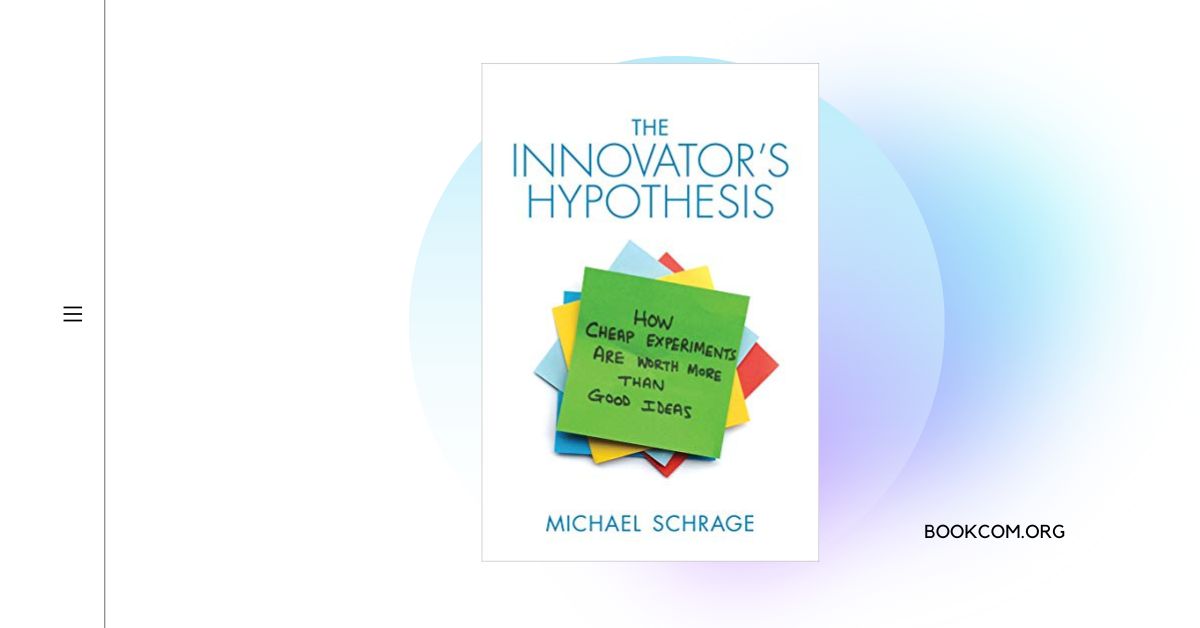“The Innovator’s Hypothesis” by Michael Schrage explores the crucial role of hypothesis-driven experimentation in driving innovation and creating successful products and services. The book challenges traditional approaches to innovation and presents a framework that encourages individuals and organizations to formulate and test hypotheses as a way to drive meaningful and impactful innovation.
Key Themes
Hypothesis-Driven Innovation: The book emphasizes the importance of using hypotheses as a foundation for innovation. It suggests that instead of relying solely on intuition or market research, innovators should develop clear and testable hypotheses about their ideas, assumptions, and customer needs to guide their innovation efforts.
Prototyping and Experimentation: Schrage highlights the significance of rapid prototyping and experimentation as key tools for testing and refining hypotheses. By creating prototypes and conducting experiments, innovators can gather real-world feedback and insights to validate or invalidate their hypotheses, leading to more informed and successful innovations.
Learning Culture and Iteration: The author emphasizes the need to foster a learning culture within organizations that encourages iterative experimentation and learning from failures. By embracing a mindset of continuous learning and improvement, innovators can refine their hypotheses, iterate their prototypes, and make more effective decisions throughout the innovation process.
Notable Concepts
Testable Value Hypothesis: Schrage introduces the concept of a “testable value hypothesis,” which focuses on identifying the core value proposition of an innovation and formulating a hypothesis around it. By defining and testing this hypothesis, innovators can gain insights into whether their proposed value proposition aligns with customer needs and desires.
Premortem Analysis: The book introduces the concept of premortem analysis, a technique that involves envisioning and analyzing potential failure scenarios before implementing an innovation. By identifying potential risks and challenges in advance, innovators can proactively address them and increase the chances of success.
Learning Metrics: Schrage emphasizes the importance of defining learning metrics that align with the hypotheses being tested. These metrics provide quantitative and qualitative feedback on the performance and impact of innovations, allowing innovators to make data-driven decisions and course corrections.
Actionable Insights
Formulating Hypotheses: The book encourages innovators to develop clear and testable hypotheses around their innovations. By articulating assumptions, risks, and expected outcomes, innovators can validate or invalidate their hypotheses through experimentation and gain insights to inform further development.
Rapid Prototyping: Schrage emphasizes the value of creating rapid prototypes to test hypotheses and gather feedback from users or customers. Prototypes can take various forms, from physical mock-ups to digital simulations, and serve as tangible artifacts for experimentation and iteration.
Embracing Failure and Learning: The book emphasizes the importance of embracing failure as an opportunity for learning and improvement. Innovators should view failures as valuable sources of feedback and adjust their hypotheses and prototypes accordingly, fostering a culture of continuous learning and innovation.
For More Information about the book, you can visit:



